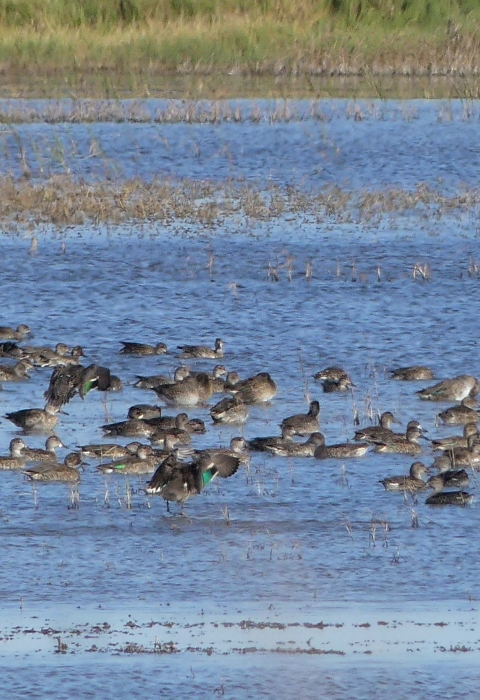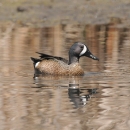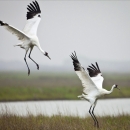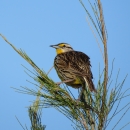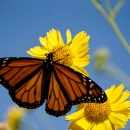Visit Us
Quivira National Wildlife Refuge provides ample opportunity to appreciate wildlife and natural environments across mixed-grass prairies, wetland impoundments, and natural salt marshes. Opportunities for visitors include wildlife viewing, photography, fishing, hunting, hiking, biking on public roads, interpretation, and environmental education. Annually, the Refuge is used by over 300 species of migratory and resident bird species, with most migratory species occurring from September to December and March to April as they journey from and to their breeding grounds. In Spring and Summer, Quivira is home to nesting species such as snowy plovers, American avocets, black-necked stilts, interior least terns and blue-winged teal. The Refuge is open from 1-1/2 hours before sunrise to 1-1/2 hours after sunset. Information and brochures can be accessed at the Visitor's Center, as well as at information kiosks throughout the Refuge. For a printable map, as well as general and hunting information, please download our 2021 brochure.
Location and Contact Information
About Us
Quivira National Wildlife Refuge was established in 1955 to provide and protect vital habitat for migratory waterfowl in the Central Flyway, conserving a unique combination of rare inland salt marsh salt marsh
Salt marshes are found in tidal areas near the coast, where freshwater mixes with saltwater.
Learn more about salt marsh and sand prairie. Quivira is a veritable oasis within this region, offering feeding, resting, and nesting areas for a wide variety of waterfowl, shorebirds, and other wetland bird species. Over 340 species of birds have been documented at Quivira, this diversity is typically found only in coastal areas or along large river systems. Quivira has been listed as critical habitat for both the endangered whooping crane and rare interior least terns as well as the threatened western snowy plover. These rare birds make Quivira a destination for bird-watchers especially during migration when flocks of geese and sandhill cranes come through as well as the whooping cranes. The Auto-Tour road around Big Salt Marsh provides an excellent opportunity for bird-watching and photography.
What We Do
To help keep plant and wildlife populations healthy, Quiviria staff uses a variety of habitat management techniques to maintain, recover or enhance plant and wildlife values. Refuge staff carefully considers any management techniques and employ them in varying degrees according to the situation. Some techniques include the removal of unwanted vegetation and planting of native species. Managing the topography to allow for the best flow of water through a process called "re-contouring" creates the best habitat for wildlife. In this process, large quantities of soil fill are spread evenly throughout the unit, resulting in a fairly shallow water basin of equal depth.
Other management practices that restore or enhance wetlands include the mechanical and chemical control of cattails and common reed, two plant species that have invaded and taken over wetland communities at Quivira. For both species, several treatments of prescribed fire are combined with mowing and herbicide applications. Cattle grazing also assists management by compacting the soil and controlling stem regrowth.
Our Species
Quivira Refuge is located in a transition zone providing habitat for both eastern and western migratory bird species. Large numbers and concentrations of these birds occur on the Refuge, and a variety of rail species are also present. Quivira also supports a diverse population of reptiles and amphibians, as well as a prairie dog town. The Refuge provides critical habitat for the federally listed whooping crane and State-listed western snowy plover. Bald eagles winter and nest on the refuge, and rare interior least terns also nest here.
